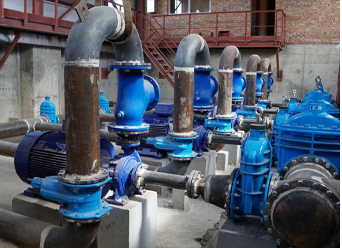Serbian
- Afrikaans
- Albanian
- Amharic
- Arabic
- Armenian
- Azerbaijani
- Basque
- Belarusian
- Bengali
- Bosnian
- Bulgarian
- Catalan
- Cebuano
- Corsican
- Croatian
- Czech
- Danish
- Dutch
- English
- Esperanto
- Estonian
- Finnish
- French
- Frisian
- Galician
- Georgian
- German
- Greek
- Gujarati
- Haitian Creole
- hausa
- hawaiian
- Hebrew
- Hindi
- Miao
- Hungarian
- Icelandic
- igbo
- Indonesian
- irish
- Italian
- Japanese
- Javanese
- Kannada
- kazakh
- Khmer
- Rwandese
- Korean
- Kurdish
- Kyrgyz
- Lao
- Latin
- Latvian
- Lithuanian
- Luxembourgish
- Macedonian
- Malgashi
- Malay
- Malayalam
- Maltese
- Maori
- Marathi
- Mongolian
- Myanmar
- Nepali
- Norwegian
- Norwegian
- Occitan
- Pashto
- Persian
- Polish
- Portuguese
- Punjabi
- Romanian
- Russian
- Samoan
- Scottish Gaelic
- Serbian
- Sesotho
- Shona
- Sindhi
- Sinhala
- Slovak
- Slovenian
- Somali
- Spanish
- Sundanese
- Swahili
- Swedish
- Tagalog
- Tajik
- Tamil
- Tatar
- Telugu
- Thai
- Turkish
- Turkmen
- Ukrainian
- Urdu
- Uighur
- Uzbek
- Vietnamese
- Welsh
- Bantu
- Yiddish
- Yoruba
- Zulu
Telephone: +86 13120555503
Email: frank@cypump.com
нов . 13, 2024 14:30 Back to list
basement pumps ejector pumps
Understanding Basement Pumps and Ejector Pumps Essential Solutions for Flood Prevention and Waste Management
Basements are often the lowest point in a home, making them vulnerable to water intrusion and flooding, especially during heavy rains or snowmelt. To combat these issues, homeowners invest in basement pumps, specifically sump pumps and ejector pumps, which serve crucial roles in maintaining dry and functional basement spaces. Understanding these systems can help homeowners make informed decisions regarding flood prevention and waste management.
Sump Pumps The First Line of Defense
Sump pumps are primarily designed to remove groundwater that collects in the sump basin, typically located in the lowest part of a basement. They work by automatically pumping out water whenever it exceeds a certain level, thus preventing flooding and water damage. Sump pumps can be categorized into two types submersible and pedestal.
Submersible Sump Pumps are placed underwater in the sump pit. They are designed to be submerged and are often quieter than pedestal pumps. Their sealed construction protects them from water exposure, making them energy-efficient and powerful enough to handle significant water inflow.
Pedestal Sump Pumps, on the other hand, have the motor situated above the sump pit. This design allows easier access for maintenance but can be noisier during operation. Generally, submersible pumps are preferred for their effectiveness and lower noise levels.
Ejector Pumps Managing Wastewater Safely
While sump pumps deal with excess water, ejector pumps serve a different purpose—managing wastewater in basements that are below the main sewer line. For homes with lower-level bathrooms, washing machines, or any plumbing fixtures situated below the sewer line, ejector pumps become essential. These pumps are responsible for lifting and discharging sewage and wastewater to ensure proper drainage.
Ejector pumps work by using a mechanical process to push wastewater from a sump basin into the main sewer line. They feature a bowl where sewage collects, and once it reaches a specific level, the pump activates to discharge the waste. It's important to note that ejector pumps are designed to handle solids and debris in the wastewater, making them integral for homes without gravity-fed drainage systems.
basement pumps ejector pumps

Importance of Proper Installation and Maintenance
Both sump and ejector pumps require professional installation to ensure they operate effectively. Poorly installed systems can lead to failure during critical times—such as during a storm or when wastewater needs to be removed. It's crucial to choose a qualified plumber or contractor with experience in installing these types of pumps to ensure proper placement and function.
Regular maintenance is also vital for these systems. Homeowners should routinely check their sump and ejector pumps for signs of wear or malfunction. Testing the system by pouring water into the sump pit helps verify that the pump activates correctly. Additionally, cleaning the sump pit and the pump itself can prevent clogs caused by sediment and debris accumulation.
Considerations for Choosing the Right Pump
When deciding on the appropriate pump for your basement, several factors need consideration. The size of the area needing protection, the expected volume of water, and the specific tasks the pump will handle (such as wastewater removal) are all critical.
For sump pumps, look for a unit with sufficient horsepower and a reliable float switch to ensure automatic activation. For ejector pumps, make sure to select a model designed to handle the volume and specifics of your household wastewater needs.
Conclusion
In conclusion, basement pumps, including sump pumps and ejector pumps, play an essential role in safeguarding homes from water damage and efficiently managing wastewater. Understanding their functionalities, installation, and maintenance can empower homeowners to make informed decisions, creating a safer and more functional living space. Investing in the right pump can preserve the structural integrity of basements, ultimately protecting valuable possessions and improving the overall quality of life in the home. Whether you are battling groundwater or managing sewage, these pumps are indispensable tools in maintaining a dry, healthy basement environment.
-
High-Performance Air Pumps for Sand & Gravel | Efficient Transport
NewsAug.03,2025
-
ISG Series Vertical Pipeline Pump - Chi Yuan Pumps Co., LTD.|Energy Efficiency, Corrosion Resistance
NewsAug.03,2025
-
ISG Series Pipeline Pump - Chi Yuan Pumps | Energy Efficiency&Compact Design
NewsAug.03,2025
-
ISG Series Vertical Pipeline Pump - Chi Yuan Pumps Co., LTD.|High Efficiency, Low Noise, Durable
NewsAug.02,2025
-
ISG Series Vertical Pipeline Pump - Chi Yuan Pumps | High Efficiency, Low Noise
NewsAug.02,2025
-
ISG Series Vertical Pipeline Pump- Chi Yuan Pumps Co., LTD.|High Efficiency&Compact Design
NewsAug.02,2025










